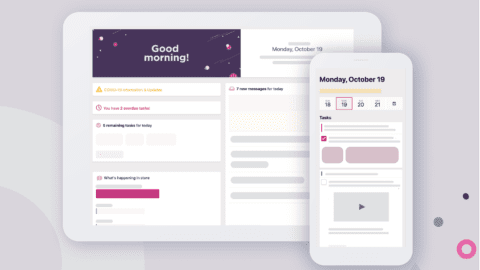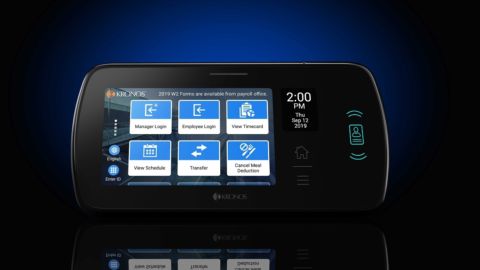Absenteeism is running rampant in retail: 31% of global retailers said they are understaffed during periods of peak workload at least half the time, and 67% are understaffed at least 25% of the time, according to a survey by Kronos. Additionally, 58% of retailers are challenged by the negative impact that unplanned absences have on staff productivity, 55% feel its effects on manager stress and 46% report taking a hit to team morale.
Managing these issues can seriously hurt the bottom line: 88% of global retailers overschedule or add additional labor rather than risk being understaffed. While staffing at higher levels is a costly remedy, the alternative — not enough associates to help customers — often directly alienates shoppers.
“We had 47% of employers say unplanned absenteeism affects customer satisfaction, and another 42% believe it impacts store revenue,” said Joyce Maroney, Executive Director of The Workforce Institute at Kronos in an interview with Retail TouchPoints. “The impact of absenteeism goes beyond just a budget issue — it’s also an issue to the top-line revenue and the morale in the store.”
One of the driving forces behind absenteeism is a lack of employee engagement: 52% of global retailers feel poor engagement leads to increased staff turnover, rising to 61% among retailers in the U.S. Improving associates’ engagement can both cut absenteeism and boost morale: 78% of global retailers say employee engagement is important to organizational success.
Flexibility, Work-Life Balance Focus Promotes Employee Responsibility
While managing schedules is a difficult task, 62% of retailers recognize that a greater focus on associates’ work-life balance can improve employee engagement. Associates who feel their employer cares about them are less likely to call in sick at the last minute or spend time searching for other job prospects. One simple yet effective way to generate a positive culture is to make sure associates’ work schedules match the needs of their home lives.
“People who are working in retail environments need work-life balance and flexibility, just like people who can stay home and do their jobs on a laptop,” said Maroney. “However, retail jobs, like a lot of other jobs, require that the person be present. That doesn’t mean that you can’t give people flexibility, which will make it less likely that they will call in sick because something has come up.”
If an associate has a standing engagement, such as picking up their children at a certain time on weekdays or attending church on weekends, retailers should make a note of this and avoid scheduling them during these times except when absolutely necessary. Cultivating these employee relationships will build trust, making them more rigorous about showing up when they are scheduled.
Shift-Swapping Empowers Employees And Relieves Managers
Technology is the other key to efficient, associate-empowering schedules. Shift-swapping is an important tool that can both improve employee morale and reduce workloads — 34% of retailers say managing shift-swap requests is one of the biggest workforce management challenges, and the industry believes the technology will enable a variety of specific benefits:
- Boosts to employee (67%) and store (65%) productivity;
- Improvements to work-life balance (64%), staff motivation (58%), morale (55%), and turnover (53%); and
- A better customer experience (50%).
Shift-swapping solutions are particularly effective with software that lets associates request time off well in advance, giving them more control over their schedules and helping retailers find replacements without waiting for the last minute.
“A great many people are calling in one to three hours before the shift, which leaves very little time for the manager to find a replacement,” said Maroney. “A better solution is to allow the employee to signal their unavailability much earlier in time so that the manager can react. That includes strategies like giving employees the ability to swap shifts with each other through a self-service solution that a manager may or may not even have to weigh in on.”
Technology also enables retailers to understand when more associates will actually be needed, letting them schedule accordingly. Traffic analytics and other tools can track the ebbs and flows of day-to-day traffic, helping retailers understand which hours require more staffing so they can plan accordingly, working with employees’ needs to create a schedule that works for all parties.
“You’re always going to need to leave some wiggle room there for human judgement,” said Maroney. “I’m not suggesting we turn scheduling over to robots. Rather, it’s that the right scheduling tools, backed by or integrated with real data on how the store behaves over time, is going to give you the best shot at creating a schedule that will work for that store. To staff to that schedule, you need to be involving employees in the discussion so you don’t set them up for failure.”













